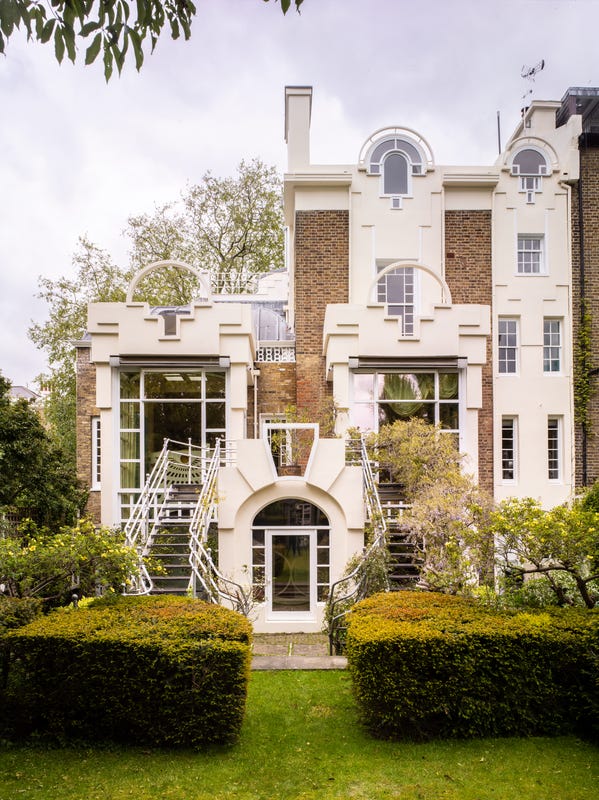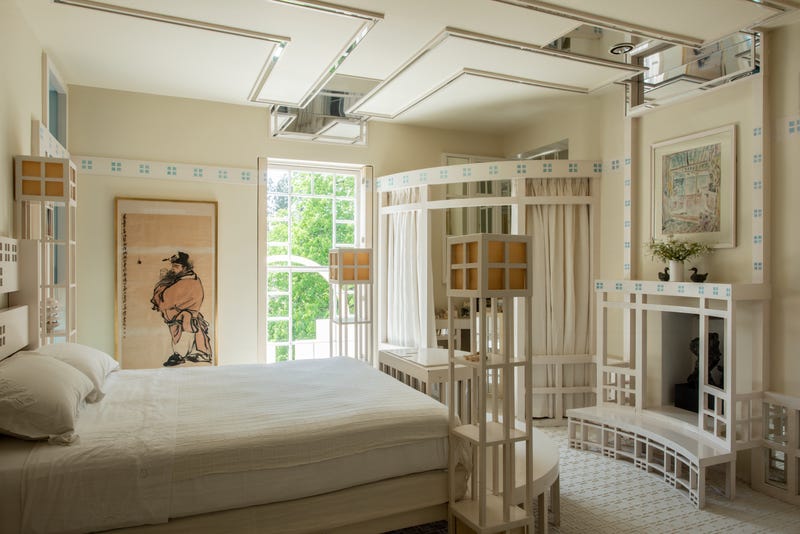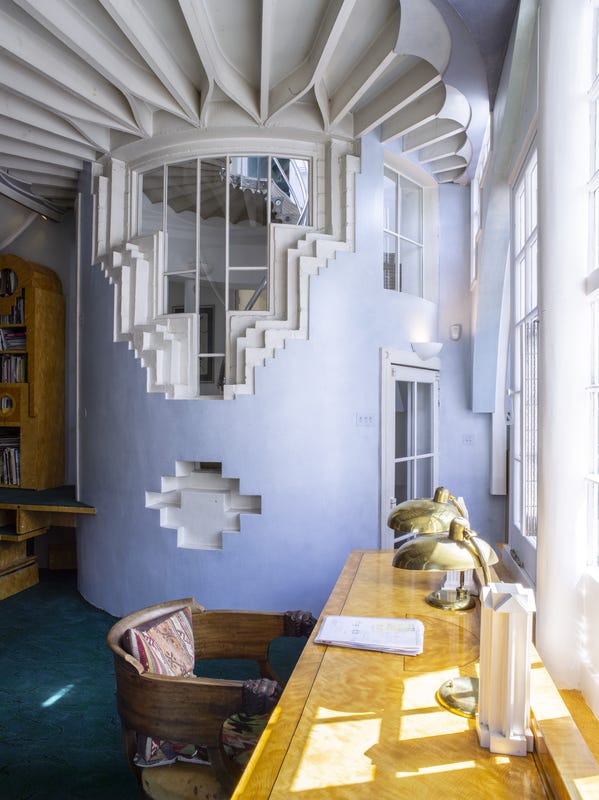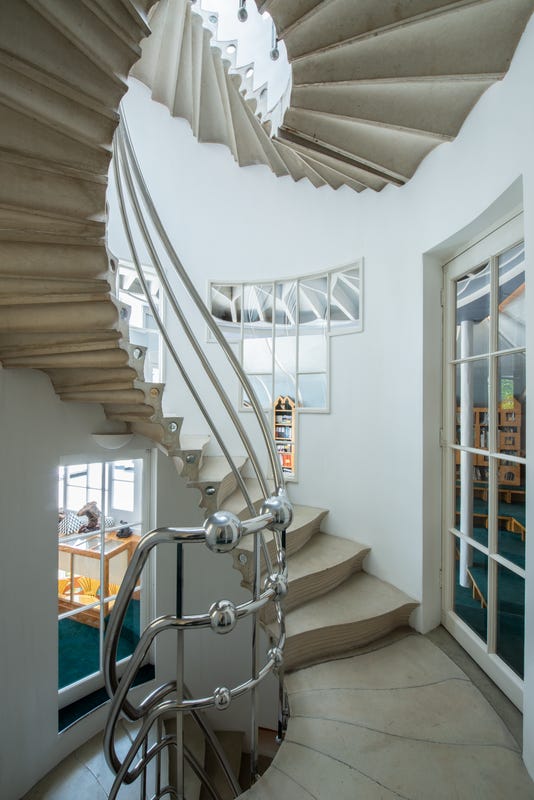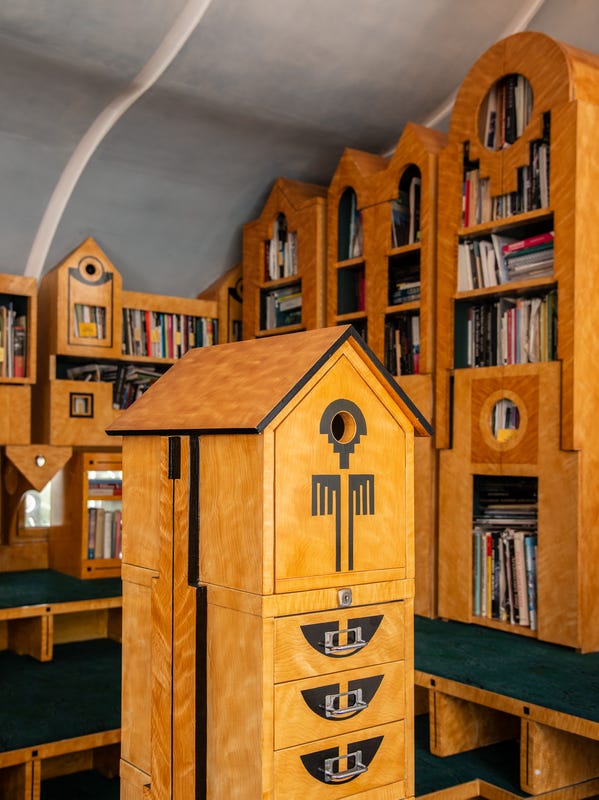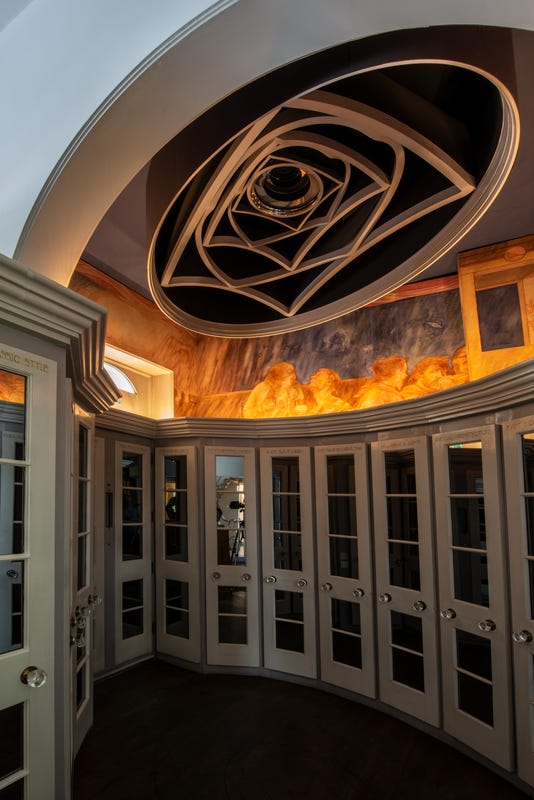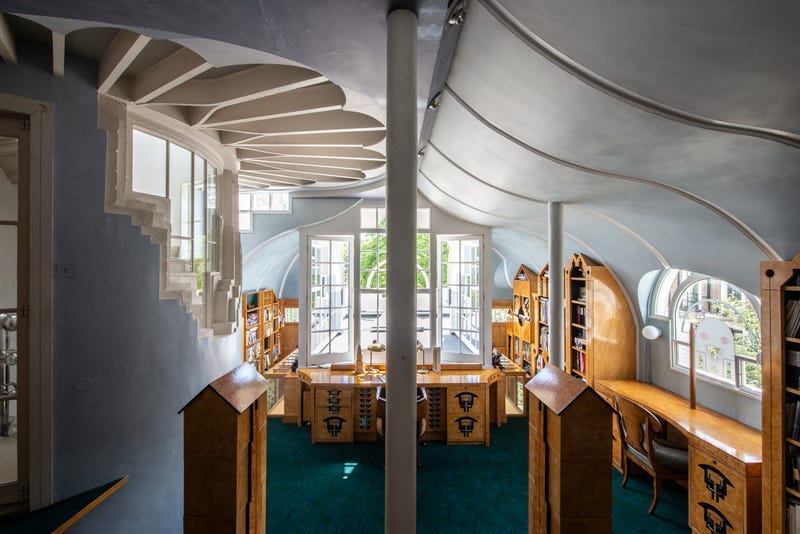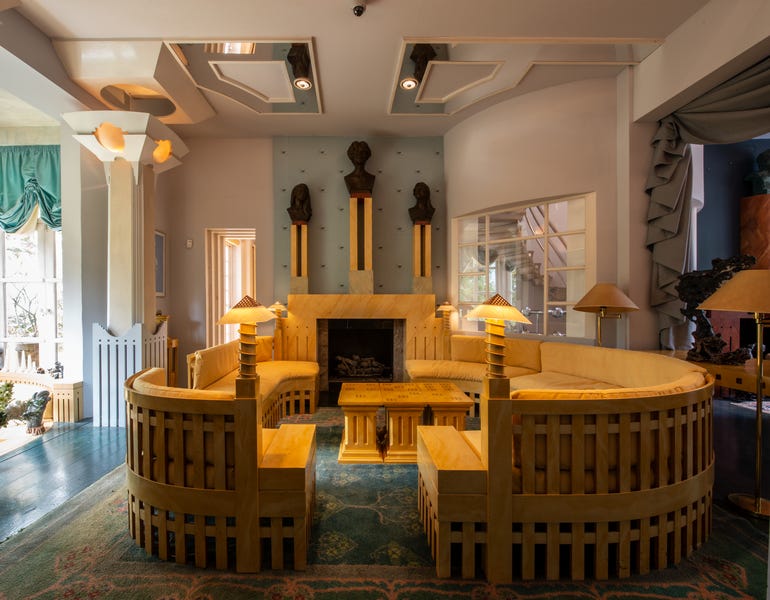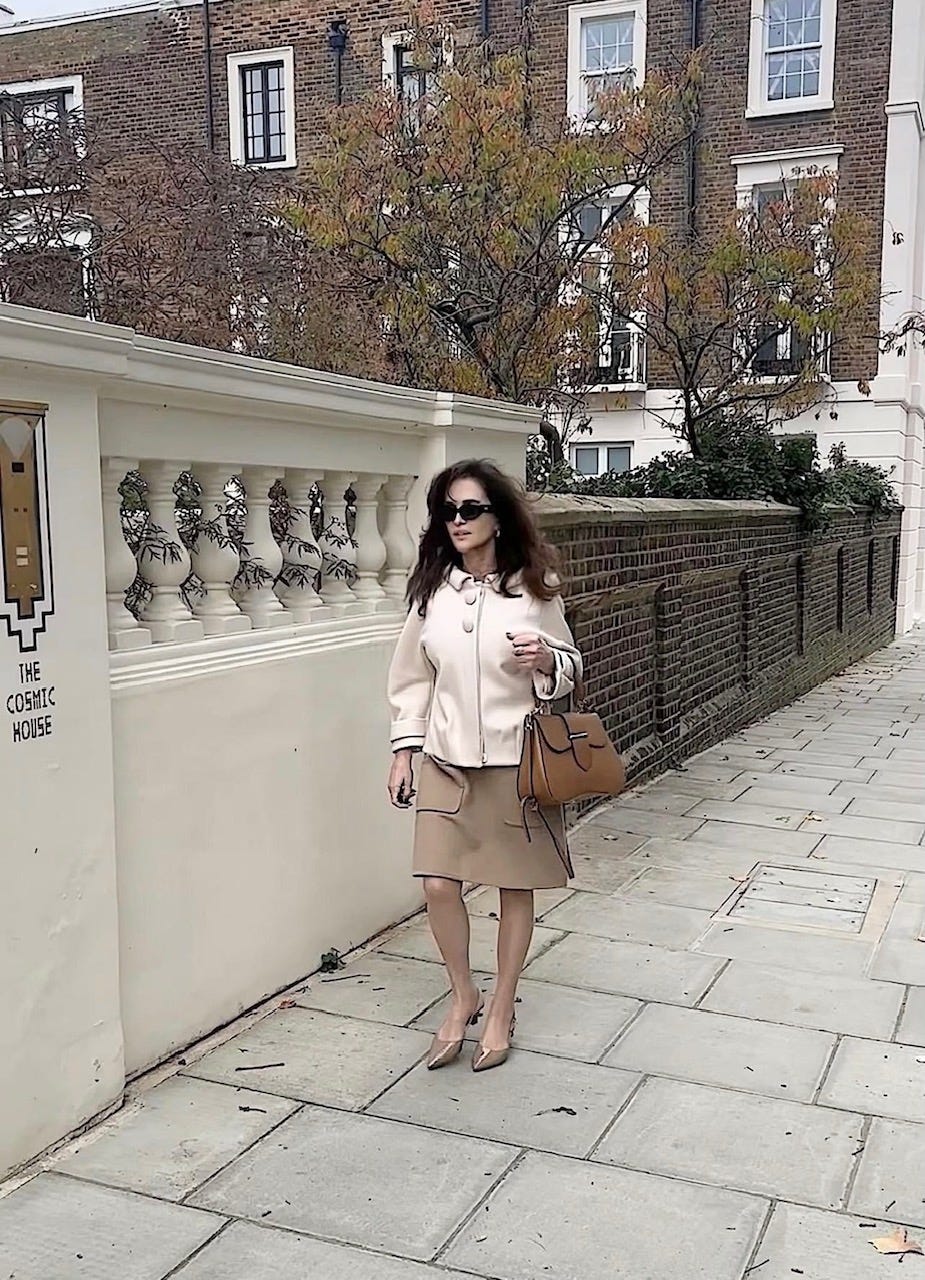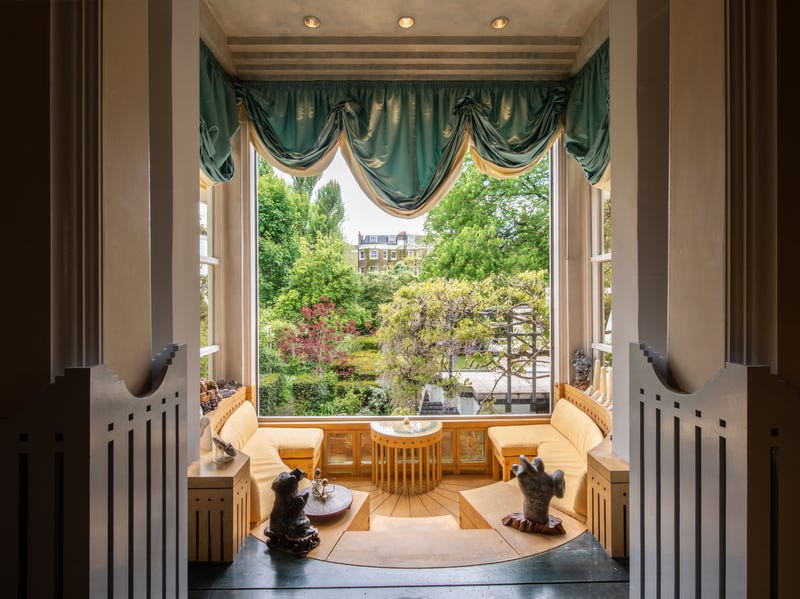Architecture Pilgrimage: The Cosmic House
Home of Charles Jencks
Whether you love it or you hate it, when you visit the Cosmic House—the postmodern masterpiece and former home of architecture legend Charles Jencks (1939-2019) and his brilliant designer wife Maggie in London’s Kensington—you will definitely smile. The Cosmic House is the embodiment of the postmodern movement that succeeded to free architecture from its traditions and conventions, responsible also for the foundation of 21st-century architecture. It is called ‘Cosmic’ as a reference to the potential of architecture to embrace an entire cosmos of design allusion, such as history, pop culture, and classical antiquity. In his own home, Jencks made a complex theory into a reality in the most ambitious and intriguing way. He wanted to live the fantasy, and so he turned an 1840s London Georgian house, into a postmodernist masterpiece. I was invited by the Jencks Foundation to visit this provocative gem and to enjoy a memorable hour in London, exploring the house in a private, it was a powerful didactic experience. Most importantly, this visit helped me to connect with the movement that now seems outdated by seeing that the house is fully alive and inspiring.
Jencks was an American theorist, architect, historian, and a TV personality who became the leading figure of the postmodernist movement during the 1970s. Some of his texts have become mandatory reading in architecture schools across the globe. When designing his own home, on which he worked from 1978 to 1983, Jencks collaborated with postmodern architects Terry Farrell and Michael Graves. Since 2021, two years after his death, the Cosmic House has been open to the public as he requested, becoming one of the most interesting historic homes in London and a sought-after destination for lovers of design from all over the world. It is perhaps the only place in the world where one can fully experience the allure of the postmodern movement. In his late years, Jencks was busy preparing the house for its public designation.
Over the last few decades, the taste for postmodernism has mostly vanished from the world, and the movement has remained more of a statement to its zeitgeist rather than a style that architects today use. Why has it become outdated? Because we are living in a moment that embraces sustainability and authenticity, praises honesty of materials, revives modernism, and the quest for preservation true to the building’s origins and historical contexts. The Postmodernists of Jencks’ generation sought to propose a progressive alternative to modernism and to its strict rules. It embraced historical sources, decoration, ornaments, textures, and sought to connect to pop culture and the taste of the public while claiming that modernism was too elitist and disconnected with reality. In the Cosmic House the key principles of the movement are fully expressed, championing complexity and contradictions over the clarity and simplicity of modernism, and it is filled with kitsch decorations and quotations from the history of design and architecture. The contradiction between the original Georgian house and the renovation created by Jencks—including the back façade—stands at the core of its program. “For my father,” Jencks’ daughter Lily said, “postmodernism was a way of freeing things up from the seriousness of modernism.”
As you walk through the house, you are walking between the rational and the irrational, between fantasy and reality, and you feel as if you are inside of a theatrical set. You can clearly identify Jenck’s sources: Charles Rennie Mackintosh, ancient Greece and Rome, Regency. The spaces are characterized by multiple changes in levels, shifted axles, fragmented forms, and a wealth of symbolism. A circular concrete staircase features 52 steps (representing the weeks in a year), and the large steel balls of its rail represent the sun, earth, and moon. The library’s bookcases are designed to look like the iconic buildings of the past, like pyramidal for Ancient Egyptian, domed for Ancient Roman, and stepped gables for the Medieval era. In Jencks’ words, “a city within a house within the city.”
The Cosmic House is the first embodiment of Jencks and his wife Maggie, a reference to their life and to the victory of the movement to capture the spirit of its age. It is enriched by a breathtaking garden, which could not look more beautiful than on the fall day of my visit.
Tickets must be booked in advance and are released monthly on every third Friday at 12 pm. The house is open three days a week for 90-minute tours of a maximum of 15 people.
Photography: Sue Barr.©Jencks Foundation
